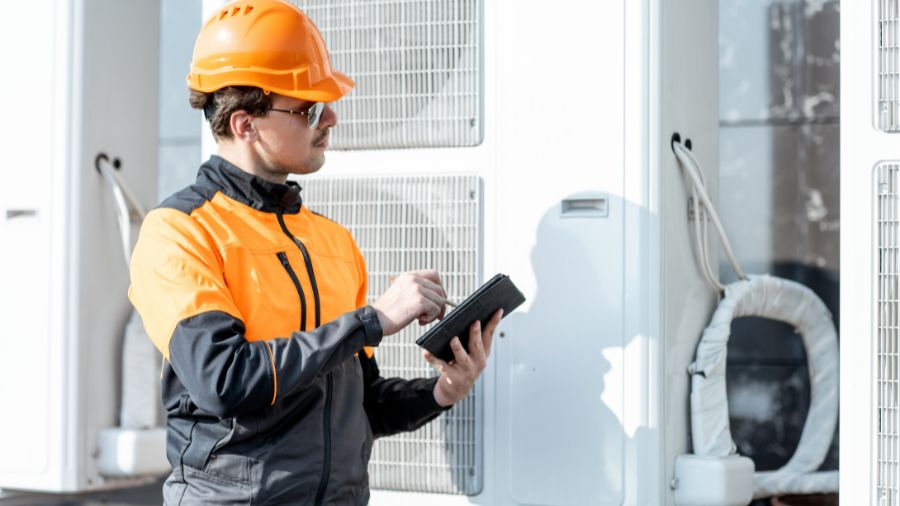A Comprehensive Analysis of Industrial Air Conditioning and Heating Markets

Image: Collected
In the ever-evolving global business scene, the industrial air conditioning sector is experiencing substantial growth, closely linked to advancements in commercial heating, HVAC systems, and central heating units. This analysis aims to provide insights into key market trends, offering valuable information for businesses and investors navigating this dynamic landscape.
The industrial air conditioning market is on the brink of significant expansion, with a projected compound annual growth rate (CAGR) of 5.8%. By 2027, it is anticipated to reach a total valuation of USD 23.94 billion, driven by a growing demand for efficient and sustainable HVAC systems, particularly in commercial spaces.
Commercial heating systems are witnessing a surge in adoption, driven by a focus on energy efficiency. The market for commercial heating is expected to grow at a CAGR of 6.5% over the next five years, reflecting a shift towards eco-friendly and cost-effective heating solutions. The HVAC systems segment is undergoing a paradigm shift, embracing smart and connected solutions. With an estimated CAGR of 6.2% through 2026, businesses are increasingly investing in HVAC technologies that promise energy savings and enhanced control.
Central heating units, playing a pivotal role in both residential and industrial spaces, are projected to grow steadily. Valued at USD 45.5 billion in 2020, the market is benefiting from technological innovations and a growing emphasis on environmental sustainability.
In the industrial air conditioning landscape, the integration of Internet of Things (IoT) technologies is a notable trend. Smart HVAC systems and central heating units with remote monitoring capabilities are becoming standard, contributing to energy optimization.
Businesses are reevaluating their product sourcing strategies amidst these trends, prioritizing collaboration with suppliers offering innovative and sustainable solutions. This shift is not only influenced by market demands but also by the pressing need for businesses to align with environmental goals.
Analyzing regional variations is crucial for businesses entering or expanding within the industrial air conditioning market. Asia-Pacific holds a significant market share, driven by rapid urbanization and infrastructure development, while North America follows closely due to stringent energy efficiency regulations.
Despite presenting lucrative opportunities, the industrial air conditioning sector faces challenges such as the initial high costs of advanced systems and regulatory complexities. However, these challenges also open avenues for innovation and partnerships.
The industrial air conditioning market is on the brink of significant expansion, with a projected compound annual growth rate (CAGR) of 5.8%. By 2027, it is anticipated to reach a total valuation of USD 23.94 billion, driven by a growing demand for efficient and sustainable HVAC systems, particularly in commercial spaces.
Commercial heating systems are witnessing a surge in adoption, driven by a focus on energy efficiency. The market for commercial heating is expected to grow at a CAGR of 6.5% over the next five years, reflecting a shift towards eco-friendly and cost-effective heating solutions. The HVAC systems segment is undergoing a paradigm shift, embracing smart and connected solutions. With an estimated CAGR of 6.2% through 2026, businesses are increasingly investing in HVAC technologies that promise energy savings and enhanced control.
Central heating units, playing a pivotal role in both residential and industrial spaces, are projected to grow steadily. Valued at USD 45.5 billion in 2020, the market is benefiting from technological innovations and a growing emphasis on environmental sustainability.
In the industrial air conditioning landscape, the integration of Internet of Things (IoT) technologies is a notable trend. Smart HVAC systems and central heating units with remote monitoring capabilities are becoming standard, contributing to energy optimization.
Businesses are reevaluating their product sourcing strategies amidst these trends, prioritizing collaboration with suppliers offering innovative and sustainable solutions. This shift is not only influenced by market demands but also by the pressing need for businesses to align with environmental goals.
Analyzing regional variations is crucial for businesses entering or expanding within the industrial air conditioning market. Asia-Pacific holds a significant market share, driven by rapid urbanization and infrastructure development, while North America follows closely due to stringent energy efficiency regulations.
Despite presenting lucrative opportunities, the industrial air conditioning sector faces challenges such as the initial high costs of advanced systems and regulatory complexities. However, these challenges also open avenues for innovation and partnerships.
Previous Story
- New Planes Every Week For a Decade -...
- Unlocking Opportunities - Industrial Minerals Propelling Global Business...
- Unveiling the Dynamics of Magnetic Materials in Global...
- Revolutionizing Roads - Motorcycle Manufacturers Navigate Shifting Gears...
- Surge in Outdoor Hunting Gear Resilience Amid Global...
- Sustainable Evolution - Denim Fabric Shaping the Global...
- Will India emerge as a global economic powerhouse...
- Global Surge in Demand - Wholesale Products Market...